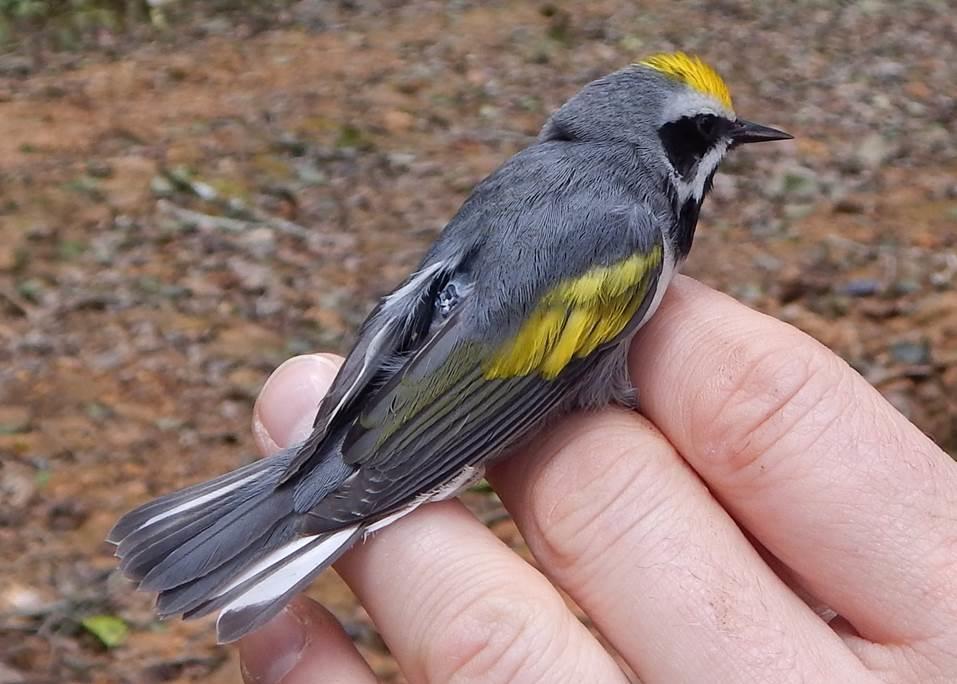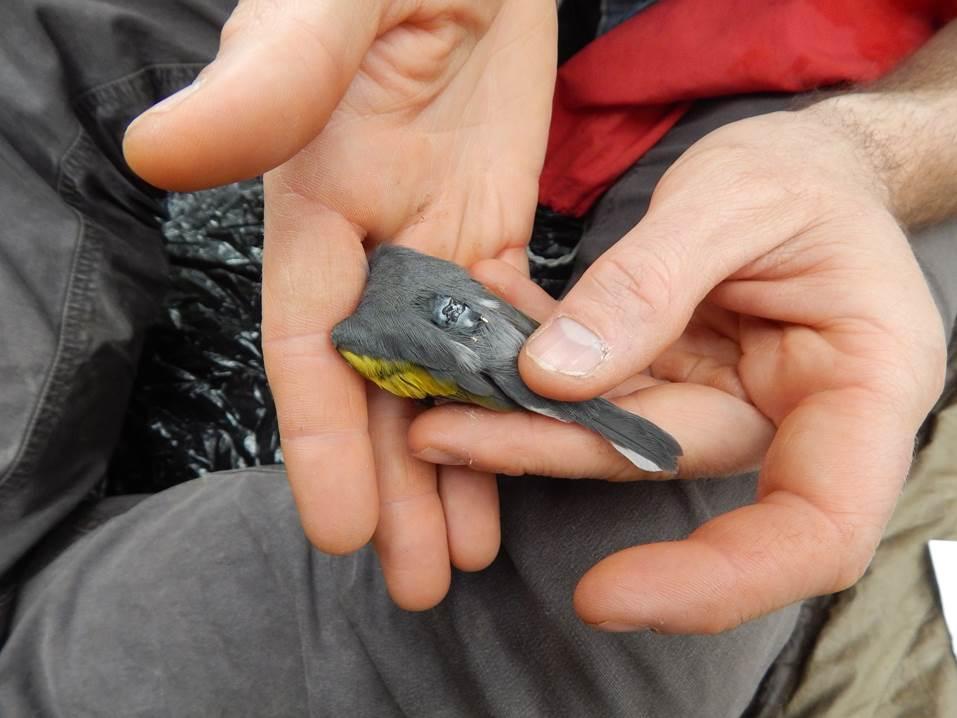Being considered for listing as an endangered species, the Golden-winged Warbler has suffered one of the steepest population declines of any songbird species in the past 45 years. Better understanding of the migration pathways of this songbird will help guide Audubon’s efforts to preserve the specialized habitats the warbler requires throughout its lifecycle.
Recently, Aimee Tomcho, Audubon NC Conservation Biologist, joined a team of researchers in the mountains of Nicaragua to deploy geolocators on Golden-winged Warblers. Nicaragua is a wintering ground for the species. Data collected from the geolocators will help preservation efforts for this highly-threatened bird.
The team was led by the NC Museum of Natural Science Research Curator for Ornithology, John Gerwin. Lizzie and John Diener, of the Tennessee River Gorge Trust, joined the group seeking hands-on experience to learn about geolocator technology, which they may apply to upcoming research on the Louisiana Waterthrush.
Finca Esperanza Verde (FEV) hosted the team as they caught and tagged Golden-winged Warblers. This coffee farm and eco-lodge near San Ramon has been the site of 10 years of neotropical migrant wintering grounds research and is an influential partner in our ongoing work to preserve Wood Thrush habitats in that region as well.

Building Connections Along a Migratory Path
The primary goal of this trip was to deploy 21 new geolocators on male Golden-winged Warblers in order to learn more about their migratory patterns. Researchers are specifically interested in where the Golden-winged Warblers that winter in Nicaraguan go to breed during the spring in the United States.
The Golden-winged Warbler wintering range stretches from Mexico to Colombia, and researchers are addressing why certain population patterns are emerging. So far, research has shown that the population of Golden-winged Warblers found in the Great Lakes region of the US is robust, but the NC Southern Appalachian population has shown steady decline.
The geolocator tagging will allow researchers to download data showing where the birds have been and how they move across the landscape. That information helps to answer these questions: How do wintering range habitats, food sources, and migratory patterns affect these population trends?
As we gain more knowledge, best management practices will evolve to improve the chances that this bird will survive.

Geolocators Unlock Conservation Secrets
New tracking technology breakthroughs allow birds as small as 8 grams to wear a photoperiod-recording device. The use of this technology in Spring of 2014 has already revealed interesting data.
In Spring 2015, Curtis Smalling, Audubon North Carolina Director of Land Bird Conservation, Aimee and technician John Jones, placed geolocators on 14 male Golden-winged Warblers while they were on their breeding grounds in North Carolina’s northwest mountains.
Last winter, Smalling traveled to El Jaguar in Nicaragua and placed 22 geolocators on male Golden-winged Warblers while they were on their wintering grounds. Overall, 25 percent of geolocators have been successfully retrieved to date with data downloaded for analysis.
The data retrieved from geolocators will be downloaded later this year and early next to inform our work in Western North Carolina that protects the habitats Golden-winged Warblers need for their survival.
Click here to learn more about Golden-winged Warblers and our work to restore their nesting habitats through the Putting Working Lands to Work initiative.





